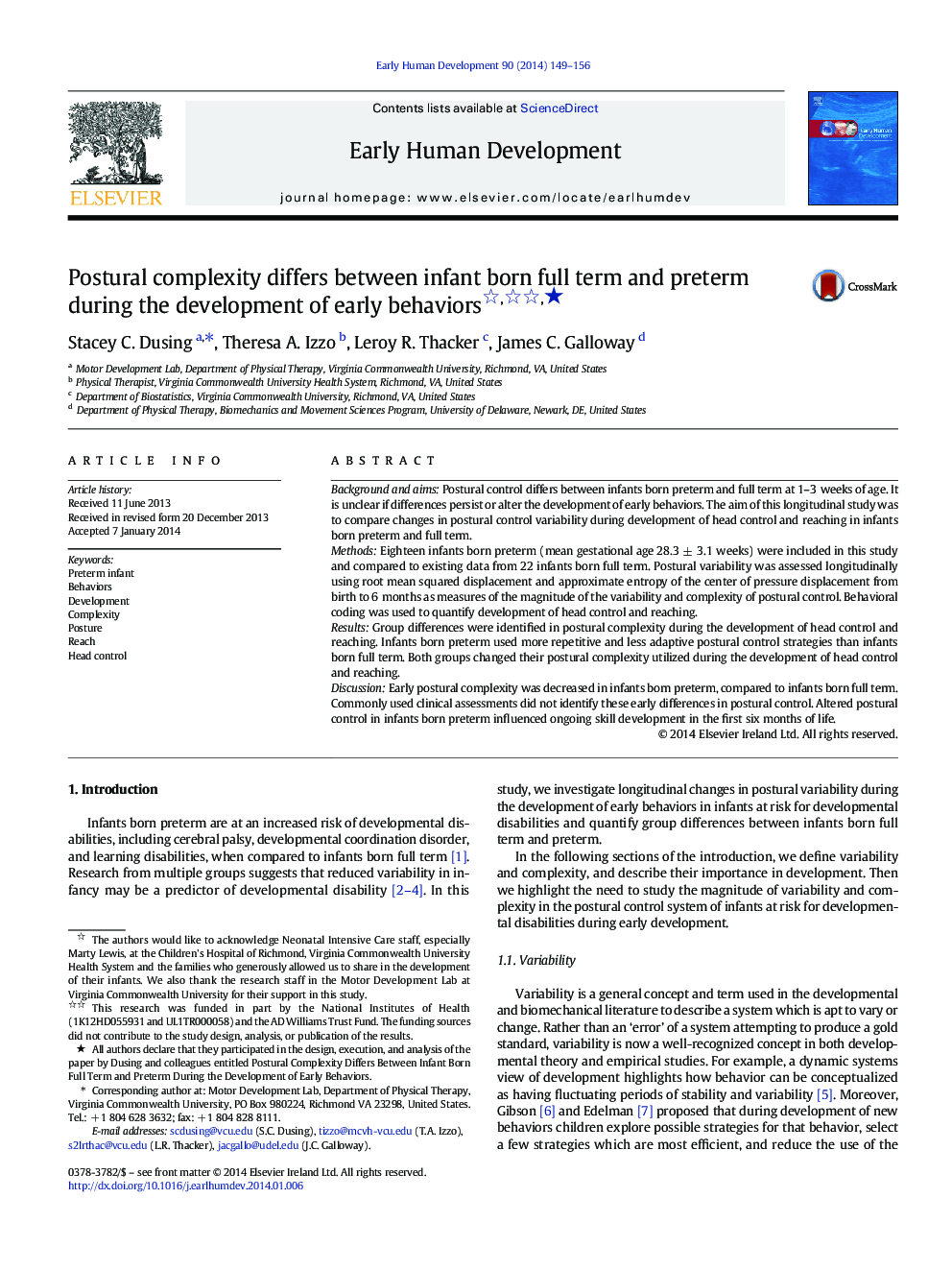| Article ID | Journal | Published Year | Pages | File Type |
|---|---|---|---|---|
| 3918036 | Early Human Development | 2014 | 8 Pages |
Background and aimsPostural control differs between infants born preterm and full term at 1–3 weeks of age. It is unclear if differences persist or alter the development of early behaviors. The aim of this longitudinal study was to compare changes in postural control variability during development of head control and reaching in infants born preterm and full term.MethodsEighteen infants born preterm (mean gestational age 28.3 ± 3.1 weeks) were included in this study and compared to existing data from 22 infants born full term. Postural variability was assessed longitudinally using root mean squared displacement and approximate entropy of the center of pressure displacement from birth to 6 months as measures of the magnitude of the variability and complexity of postural control. Behavioral coding was used to quantify development of head control and reaching.ResultsGroup differences were identified in postural complexity during the development of head control and reaching. Infants born preterm used more repetitive and less adaptive postural control strategies than infants born full term. Both groups changed their postural complexity utilized during the development of head control and reaching.DiscussionEarly postural complexity was decreased in infants born preterm, compared to infants born full term. Commonly used clinical assessments did not identify these early differences in postural control. Altered postural control in infants born preterm influenced ongoing skill development in the first six months of life.
